Antibody data
- Antibody Data
- Antigen structure
- References [1]
- Comments [0]
- Validations
- Immunohistochemistry [6]
- Other assay [1]
Submit
Validation data
Reference
Comment
Report error
- Product number
- PA5-59407 - Provider product page

- Provider
- Invitrogen Antibodies
- Product name
- STX12 Polyclonal Antibody
- Antibody type
- Polyclonal
- Antigen
- Recombinant protein fragment
- Description
- Immunogen sequence: MSYGPLDVYR NPGPSGPQLR DFSSIIQTCS GNIQRISQAT AQIKNLMSQL GTKQDSSKLQ ENLQQLQHST NQLAKETNEL LKE Highest antigen sequence identity to the following orthologs: Mouse - 96%, Rat - 95%.
- Reactivity
- Human, Mouse, Rat
- Host
- Rabbit
- Isotype
- IgG
- Vial size
- 100 μL
- Concentration
- 0.1 mg/mL
- Storage
- Store at 4°C short term. For long term storage, store at -20°C, avoiding freeze/thaw cycles.
Submitted references Mitochondrial Respiratory Defect Enhances Hepatoma Cell Invasiveness via STAT3/NFE2L1/STX12 Axis.
Lee YK, Kwon SM, Lee EB, Kim GH, Min S, Hong SM, Wang HJ, Lee DM, Choi KS, Park TJ, Yoon G
Cancers 2020 Sep 15;12(9)
Cancers 2020 Sep 15;12(9)
No comments: Submit comment
Supportive validation
- Submitted by
- Invitrogen Antibodies (provider)
- Main image
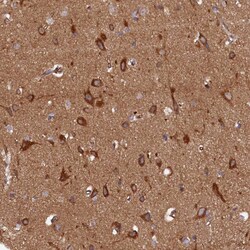
- Experimental details
- Immunohistochemical analysis of STX12 in human cerebral cortex using STX12 Polyclonal Antibody (Product # PA5-59407) shows strong cytoplasmic positivity in neurons.
- Submitted by
- Invitrogen Antibodies (provider)
- Main image
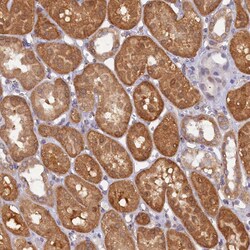
- Experimental details
- Immunohistochemical analysis of STX12 in human kidney using STX12 Polyclonal Antibody (Product # PA5-59407) shows moderate cytoplasmic positivity in cells in tubules.
- Submitted by
- Invitrogen Antibodies (provider)
- Main image
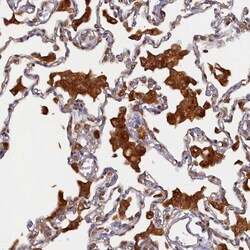
- Experimental details
- Immunohistochemical analysis of STX12 in human lung using STX12 Polyclonal Antibody (Product # PA5-59407) shows strong cytoplasmic positivity in macrophages.
- Submitted by
- Invitrogen Antibodies (provider)
- Main image
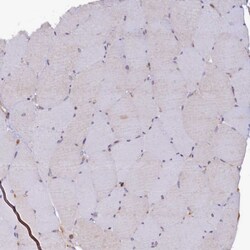
- Experimental details
- Immunohistochemical analysis of STX12 in human skeletal muscle using STX12 Polyclonal Antibody (Product # PA5-59407) shows no positivity in myocytes as expected.
- Submitted by
- Invitrogen Antibodies (provider)
- Main image
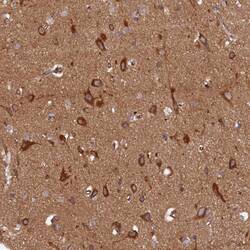
- Experimental details
- Immunohistochemical analysis of STX12 in human cerebral cortex using STX12 Polyclonal Antibody (Product # PA5-59407) shows strong cytoplasmic positivity in neurons.
- Submitted by
- Invitrogen Antibodies (provider)
- Main image
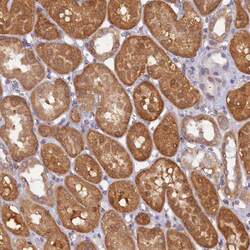
- Experimental details
- Immunohistochemical analysis of STX12 in human kidney using STX12 Polyclonal Antibody (Product # PA5-59407) shows moderate cytoplasmic positivity in cells in tubules.
Supportive validation
- Submitted by
- Invitrogen Antibodies (provider)
- Main image
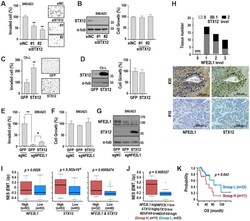
- Experimental details
- Figure 6 STX12 is a key regulator of hepatoma cell invasiveness. ( A , B ) SNU423 cell was transfected with STX12 siRNA for 72 h. ( A ) Cell invasion assay using a Matrigel-coated Transwell system. Representative invaded cell images are shown in the right panel. ** p < 0.01 vs. siNC by the Student t-test. ( B ) Western blot (left) ( Figure S7 ) and cell growth rate (right). #1 and #2 indicate two different siRNAs for STX12. ( C , D ) Ch-L was transfected with STX12 plasmid for 48 h. ( C ) Cell invasion assay. Representative invaded cell images are shown in the right panel. ** p < 0.01 vs. GFP by the Student t-test. ( D ) Western blot (left) ( Figure S7 ) and cell growth rate (right). ( E - G ) SNU423 clone, which was stably suppressing NFE2L1 with sgNFE2L1 RNA, was further infected with lentivirus harboring STX12 or GFP. ( E ) Cell invasion assay. ** p < 0.01 vs. sgNC; # < 0.05 vs. GFP by the Student t -test. ( F ) Cell growth. ( G ) Western blot. ( Figure S7 ) ( H ) Immunohistochemistry of HCC tissue microarray, as described in 'Materials and Methods'. Lower panel shows representative images for NFE2L1 and STX12 immunostaining. ( I , J ) Boxplots of the normalized enrichment score (NES) for EMT signature of the primary HCC tissues from the TCGA_LIHC dataset. Bottom, middle, and top lines of each box indicate the first quartile, median, and third quartile values, respectively. Whiskers represent the minimum and maximum values. p -values from Welch two-sample t -test are indic
 Explore
Explore Validate
Validate Learn
Learn Western blot
Western blot Immunohistochemistry
Immunohistochemistry